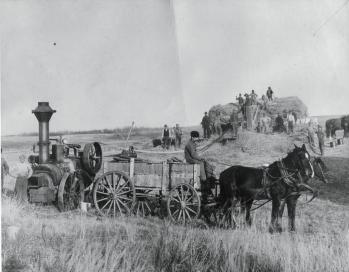
Town, pop 1,037, located SW of Whitewood on Hwy 48. The community was named in honour of Rudyard Kipling, the renowned British poet and author. Although the district was settled well before railways arrived, the present community developed as the Canadian Northern Railway came through in 1907–08. Although Kipling experienced substantial decline in the 1930s, World War II saw it return to prosperity. In the decades since, it has been one of the limited number of communities in rural Saskatchewan to experience continuous growth. On January 1, 1954, Kipling attained town status. As the largest community in the region, centrally situated amidst a half a dozen rural municipalities, Kipling serves a substantial trading area. The economy is largely based upon a combination of grain and livestock production. The livestock industry has been significantly bolstered by the development of several large hog operations in recent years, and Kipling has become the headquarters for one of the world’s leading companies conducting research on swine genetics. Heritage properties in the community include Kipling’s former CN station, built in 1908–09, and the rural municipality office, built in 1919. Additionally, the Kipling and District Historical Society Museum occupies a large site featuring some of the region’s earliest buildings. To the south of Kipling stands the Bekevar Church, which was constructed by the district’s Hungarian settlers in 1911–12.
David McLennan
Print EntryHOME | BROWSE BY SUBJECT | ENTRY LIST (A-Z) | IMAGE INDEX | CONTRIBUTOR INDEX | ABOUT THE ENCYCLOPEDIA | SPONSORS TERMS OF USE | COPYRIGHT © 2006 CANADIAN PLAINS RESEARCH CENTER, UNIVERSITY OF REGINA | POWERED BY MERCURY CMS |
|||
| This web site was produced with financial assistance provided by Western Economic Diversification Canada and the Government of Saskatchewan. |
|||
 |
 |
 |
 |
| Ce site Web a été conçu grâce à l'aide financière de Diversification de l'économie de l'Ouest Canada et le gouvernement de la Saskatchewan. |
|||